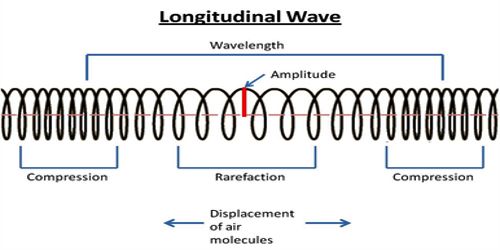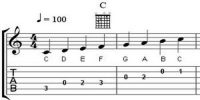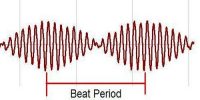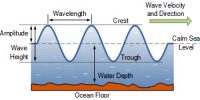Longitudinal wave: When particles of the medium vibrate about their mean position parallel to the direction of propagation of the disturbance, the wave is called longitudinal wave.
Examples: The various examples of sound wave are: Sound wave, Waves in a slink, Glass vibrations, Ultra sound, Spring oscillations, Waves in a spring etc.
Explanation: In the figure longitudinal wave has been shown by some vertical lines of equal spacing [Fig. (a)].
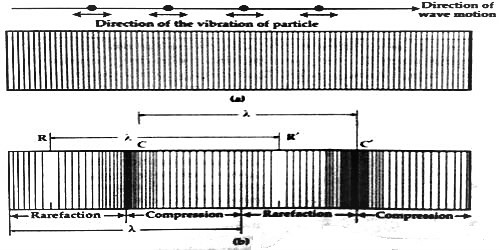
Process of wave transmission: When longitudinal wave propagates through the medium, then positions of different lavers of the medium is shown as in fig. (b).
Pressure and density of the medium are increased in the region of compression whereas they are decreased in the region of rarefaction. By compression and rarefaction of the medium longitudinal wave propagates from one place to another. The length or distance between adjacent compression and rarefaction constitutes one wavelength.
Example:
(1) During speaking we create oscillation of the air particles of the medium inside our mouth by the tongue. Direction of the oscillation of particles of air medium in this case, is along the direction of propagation of the wave. The sound emitted from the mouth of a speaker or singer reaches to our ears through air as longitudinal wave through compression and rarefaction of the medium.
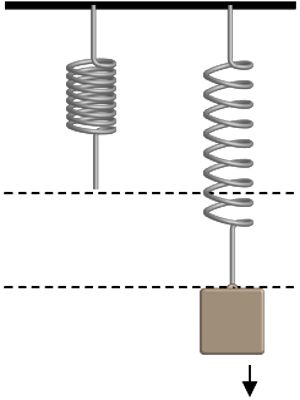
(2) We take a vertical spring one end of which is fixed to a rigid support and a mass is attached to the other end [Fig.2]. The spring is pulled slightly downward and is released. It is observed that contraction and extension of the spring take place periodically along its length. That means the motion of the coils of the spring is a simple harmonic motion along the direction of propagation of the wave. So the wave produced in the spring is a longitudinal wave.
